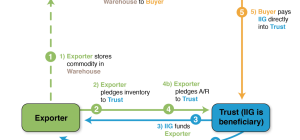According to student support group HEI Services, the number of disabled student allowance applications processed during the 2012 to 2013 academic year was 30 per cent higher than in the previous year. The rise in the number of students who are in receipt of this allowance can be attributed to a more inclusive governmental policy that aims to provide every student in need with the adequate level of support required.
 Disabled student allowance payments are available to higher education students who have physical or learning disabilities, mental health conditions, or a chronic health condition. Disabled students can benefit from these dedicated allowances irrespective of whether they are already in receipt of other types of student finance support. Moreover, and unlike student loans, DSA payments are a government grant so they do not need to be repaid. Because disabled student allowance is means assessed, it does not matter how much annual income your family earns. Your eligibility is determined by your disability, not the financial means of your household.
Disabled student allowance payments are available to higher education students who have physical or learning disabilities, mental health conditions, or a chronic health condition. Disabled students can benefit from these dedicated allowances irrespective of whether they are already in receipt of other types of student finance support. Moreover, and unlike student loans, DSA payments are a government grant so they do not need to be repaid. Because disabled student allowance is means assessed, it does not matter how much annual income your family earns. Your eligibility is determined by your disability, not the financial means of your household.
There is not a set amount to be received when it comes to disabled student allowances. According to governmental policies, every case is assessed on an individual basis. This means that the impact your disability will have on your learning, and the amount of support you need to minimize the impact are key factors in determining how much you as a student are entitled to receive. However, the government has set upper limits, there are maximum DSA amounts that a student can receive. DSA payments are usually classified into three different types: general allowances (up to £1,724 for full-time students and £1,293 for part-time students), specialist equipment allowances (up to £5,161), and non-medical helper allowances (which range between £15,390 and £20,250 depending on whether a course is full-time or part-time). Postgraduate students are entitled to receive a maximum single allowance of £10,260.
The assessment process evaluates the personal situation of each student and determines his or her specific needs. This process consists of a 1.5 to 2-hour interview with an assessor, during which aspects like course requirements, learning needs, and specific difficulties that a student may have are discussed in depth. In doing so, assessors make sure that the impact a disability may on learning is kept to a minimum.
Students are also encouraged to try dedicated software and equipment to make sure that it suits their needs. During the interview, the assessor makes recommendations as to the kind of support available in each case, and after the assessment these suggestions are put into writing in a needs assessment report. This report is sent to the relevant funding body with your consent, who will review it and allocate a suitable DSA payment.
By ensuring that disabled student allowance payments are based on the needs of each applicant, the UK government guarantees that every student in need receives the personalised support and assistance necessary for them to successfully complete their course in a manner that minimizes the disadvantages that they face due to their disability.
Nick Davison writes for a number of websites including Access First DSA Assessment.







